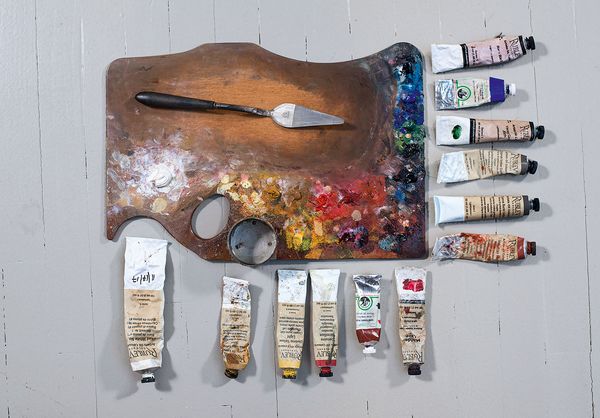John Currin: Preparing the Palette (Step by Step). Open Studio: Do-It-Yourself Art Projects by Contemporary Artists, by Sharon Coplan Hurowitz & Amanda Benchley. Photography by Casey Kelbaugh, Phaidon.
In their new book, Open Studio, authors Sharon Coplan Hurowitz and Amanda Benchley offer a behind-the-scenes look at leading contemporary artists at work in their studios, with original art projects to recreate at home—including works by Mickalene Thomas, John Currin, Rashid Johnson, The Haas Brothers, and Julie Mehretu. To celebrate the book's debut, Phillips and Phaidon have partnered on an exclusive video series featuring three of the artists—Marina Abramovic, Will Cotton, and Rachel Feinstein—granting unmitigated access to their studios and their creative practices like never before.
Below, Sharon Coplan Hurowitz and Amanda Benchley share exclusive excerpts from the book alongside the video series to explore how each artist came to love art, their unique creative methodologies, and the sources of their inspiration.
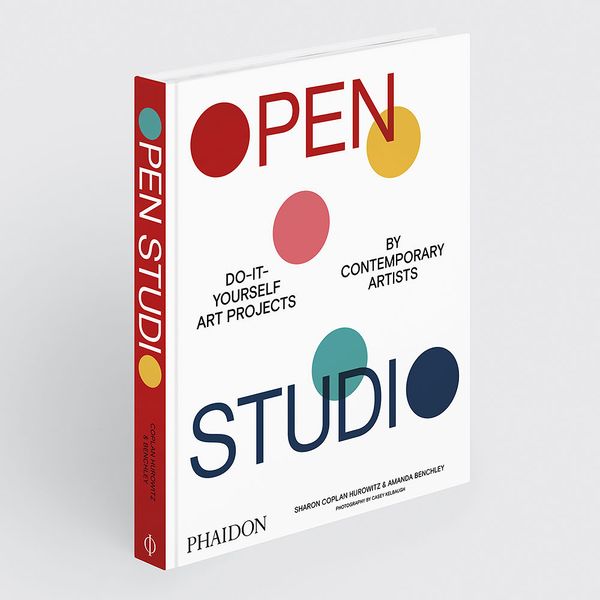
Special Offer
Phillips readers are invited to use offer code PHILLIPS20 to enjoy 20% off the purchase price of Open Studio: Do-It-Yourself Art Projects by Contemporary Artists, available at Phaidon.com/OpenStudio.

Rachel Feinstein: Rococo Hut
For me, being a part of this book is about making art accessible to everybody.
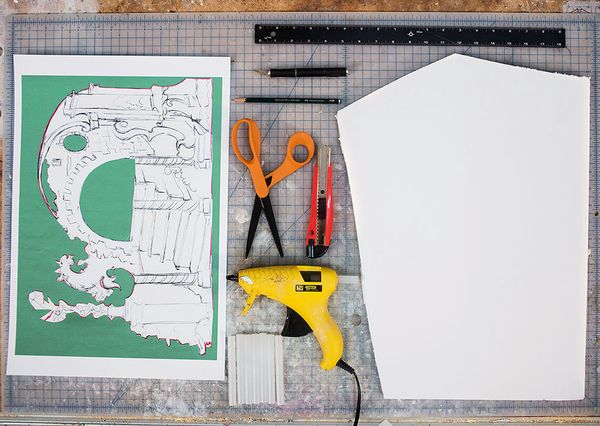
Rachel Feinstein: Rococo Hut (Materials). Courtesy of the artist. Photography by Casey Kelbaugh.

George Condo: Fashion Model
When you make a painting or drawing, you never know where it’s going to take you, says George Condo as he stands in the middle of the front room of his duplex studio on New York’s Gramercy Park, a grand nineteenth-century room resplendent with decorative moldings and floor-to- ceiling Palladian windows. The room was likely a ballroom for previous inhabitants, and now it’s a workspace devoted to the creation of George’s paintings, drawings, sculptures, and prints.

George Condo, studio portrait. Open Studio: Do-It-Yourself Art Projects by Contemporary Artists, by Sharon Coplan Hurowitz & Amanda Benchley. Photography by Casey Kelbaugh, Phaidon.
George’s large-scale paintings are perfectly proportioned with the room’s high-ceilinged walls; they await his finishing touches before shipping out to an upcoming exhibition. These brightly colored, expertly executed paintings are characteristically George Condo: fragmented, multi-perspective portraits that recall Pablo Picasso and Willem de Kooning, two of George’s artistic heroes. He references many of art history’s greats in his work— from Old Masters to Pop artists—but brings a debauched interpretation to his subjects, with hints of satire and humor that can be unsettling to the viewer. These subjects often feature pronounced and bulging eyes, prominently bucked teeth, and bodies comprised of color blocks that explain why his style has been called “figurative abstraction” or “psychological Cubism.” While his work is widely collected by museums, George has also crossed over into popular culture, designing album covers for musicians as diverse as Kanye West, the band Phish, and the nineteenth-century German com- poser Robert Schumannn.
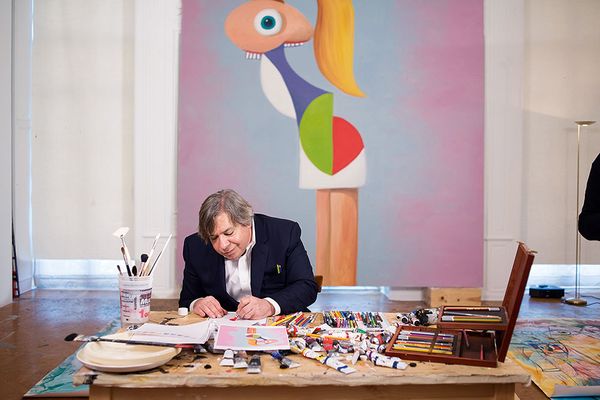
George Condo: Fashion Model (Step by Step: The Start). Courtesy of the artist. Photography by Casey Kelbaugh.
George came to prominence in the New York art scene in the 1980s, alongside Jean-Michel Basquiat. Andy Warhol once asked if George would trade a piece of his work for a portrait of him. George agreed, but asked Warhol to make it a “paint-by- numbers” version, referring to the “Do It Yourself” series that Warhol had made in the early 1960s—based on mass-market commercial painting sets—a beginning step in what would become the Pop Art movement. Warhol agreed to the trade, reportedly saying: “Wow, I haven’t done one of those in a long time.” Unfortunately he died before it could be completed. In homage to that friendship and story, George has decided that his OPEN STUDIO project will be a color- by-numbers exercise, converted from an image of one of his new paintings. The painting, Fashion Model (2019), is a profile of what appears to be a pony-tailed blonde, wearing a dress made up of colorful geometric shapes. And in further homage to Warhol, who sometimes left his paint-by-numbers works unfinished, George has decided not to color in the entire picture.

George Condo: Fashion Model (Materials). Courtesy of the artist. Photography by Casey Kelbaugh.

Marina Abramović: Counting the Rice
When you calm down, you understand that time doesn't matter anymore... and in that kind of calm, you arrive in the moment of here and now.
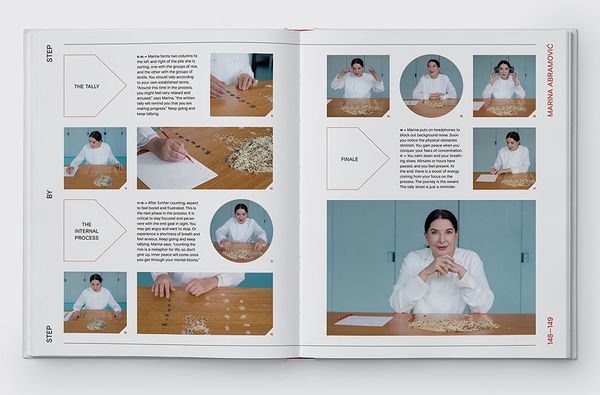
Marina Abramović: Counting the Rice (artwork), Step by Step. Open Studio: Do-It-Yourself Art Projects by Contemporary Artists, by Sharon Coplan Hurowitz & Amanda Benchley. Photography by Casey Kelbaugh, Phaidon.

Wangechi Mutu: Earth Androids
The front of Wangechi Mutu’s New York brownstone looks like every other house on its quiet, tree-lined Brooklyn street. But entering the first-floor parlor room, one is greeted by two oversized, mud and ash colored sculptures of other-wordly figures, their limbs entangled with tree branches. There are also two giant animal horns; an inspiration wall of photos, fabrics, and African dolls; industrial-size containers of craft glue; and rows of neatly labeled jars filled with tea leaves, coffee, and soil from her native Kenya, where she lives part-time with her husband and two children.

Wangechi Mutu: Earth Androids (Materials). Courtesy of the artist. Photography by Casey Kelbaugh.
When they are in New York, Wangechi and her family live above her studio, but she says she only feels truly at home when she is making art. WhenI go back to where I was born and raised, I don’t recognize it. And hardly anybody recognizes me, which is also why I think the art of making or creating is grounding because it insists that you find that place of comfort within yourself. Everything makes more sense when I am making things.
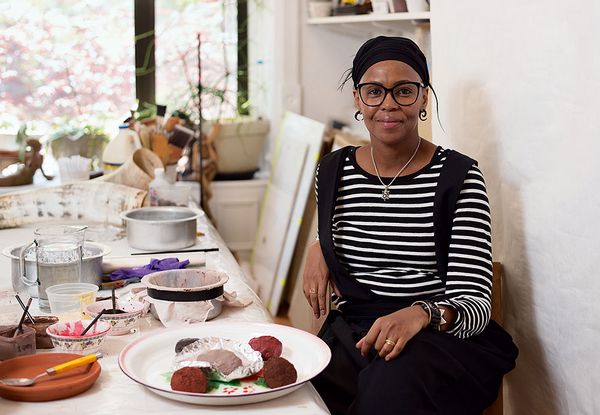
Wangechi Mutu: Earth Androids (Step by Step: Drying). Courtesy of the artist. Photography by Casey Kelbaugh.
Among the things Wangechi makes are drawings, mixed-media collages, videos, paintings, and sculptures. Her figures—usually female and always mysterious—can be described as “Afrofuturist.” She uses tentacles and tree-shaped limbs to create forms that explore black femininity and its exploitation—colonial and otherwise— raising the possibility of other alterna- tive realities.
The Museum of Modern Art in New York owns many of her works on paper, and her sculptures have been chosen for the Venice Biennale and the Whitney Biennial. She was also commissioned by the Metropolitan Museum in New York to create sculptures to adorn the four niches of its facade for the first time in the museum’s history—niches she filled with giant, seven-foot bronze women who guard the museum like warrior queens. Wangechi loves experimenting with sculptural materials, a process that, to her, is as important as the final product.

Will Cotton: The Royal Crown of Candyland
I love to think about who the crown is going to go on before I start making it — in fact, it's really critical.
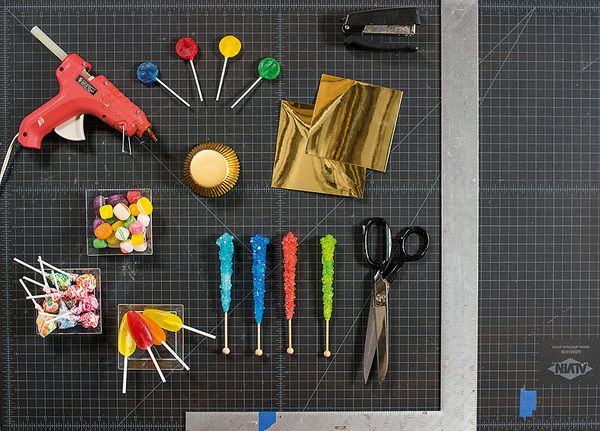
Will Cotton: The Royal Crown of Candyland (Materials). Courtesy of the artist. Photography by Casey Kelbaugh.
Discover More from Editions & Works on Paper >

Recommended Reading
Author Picks: Editions & Works on Paper >
